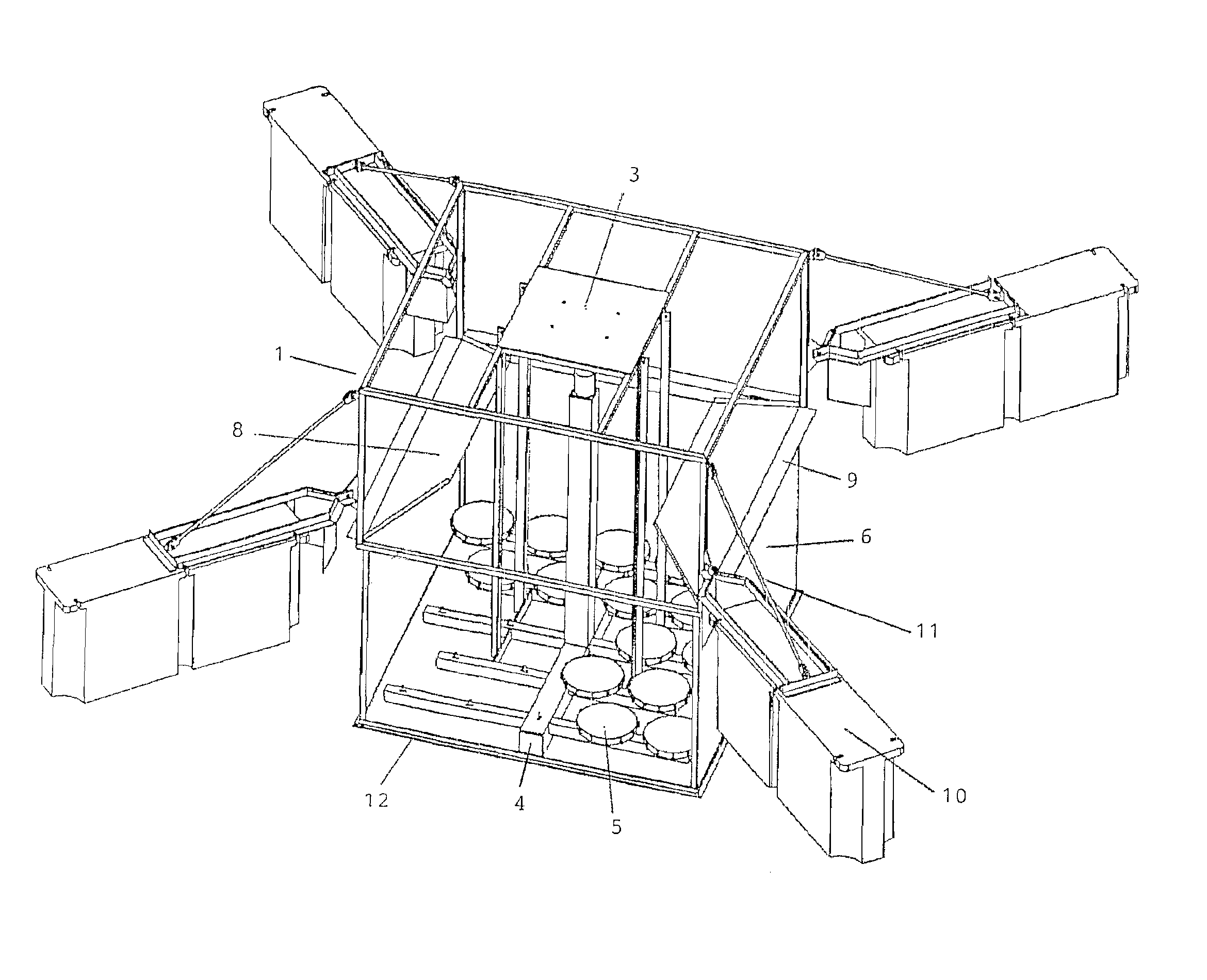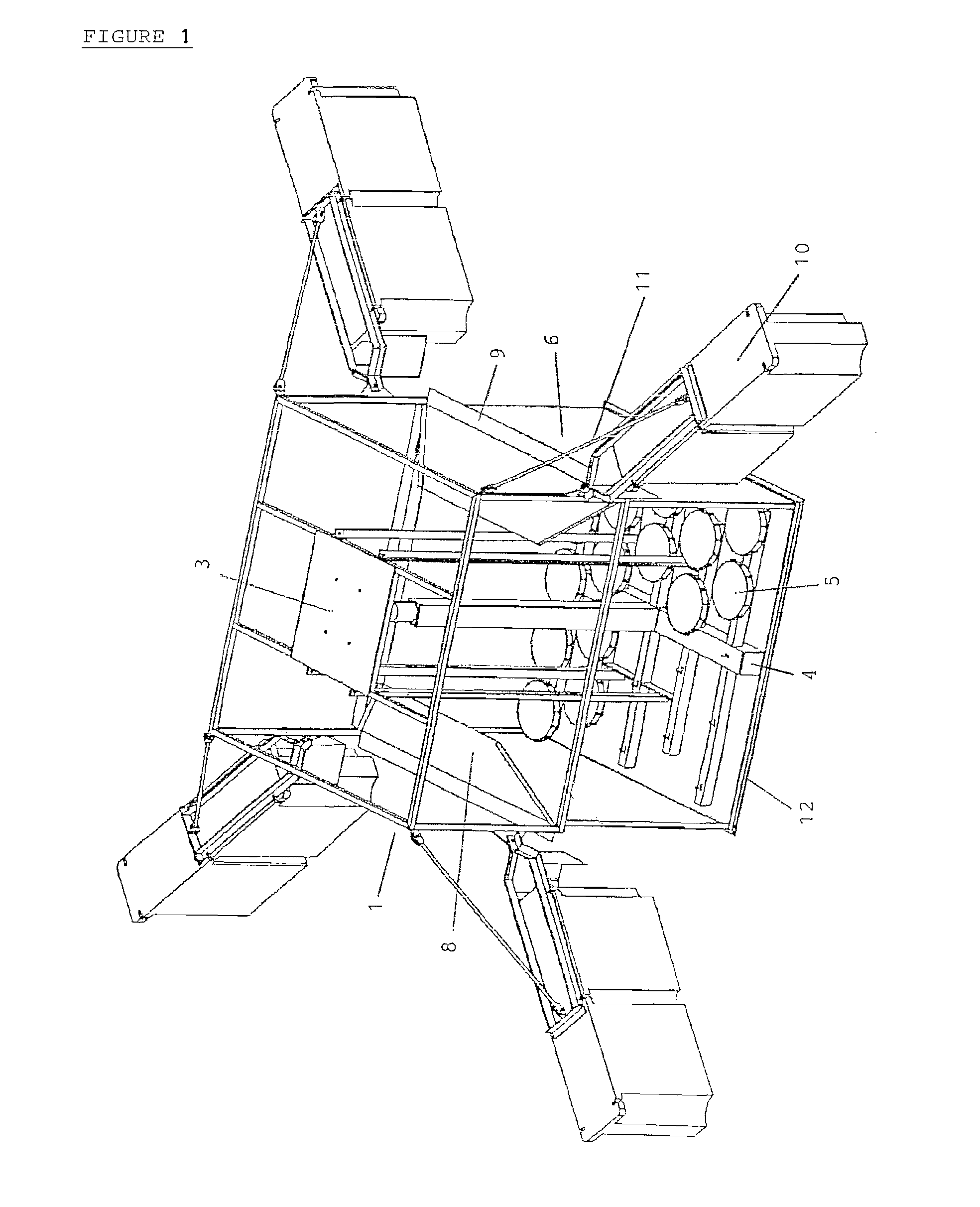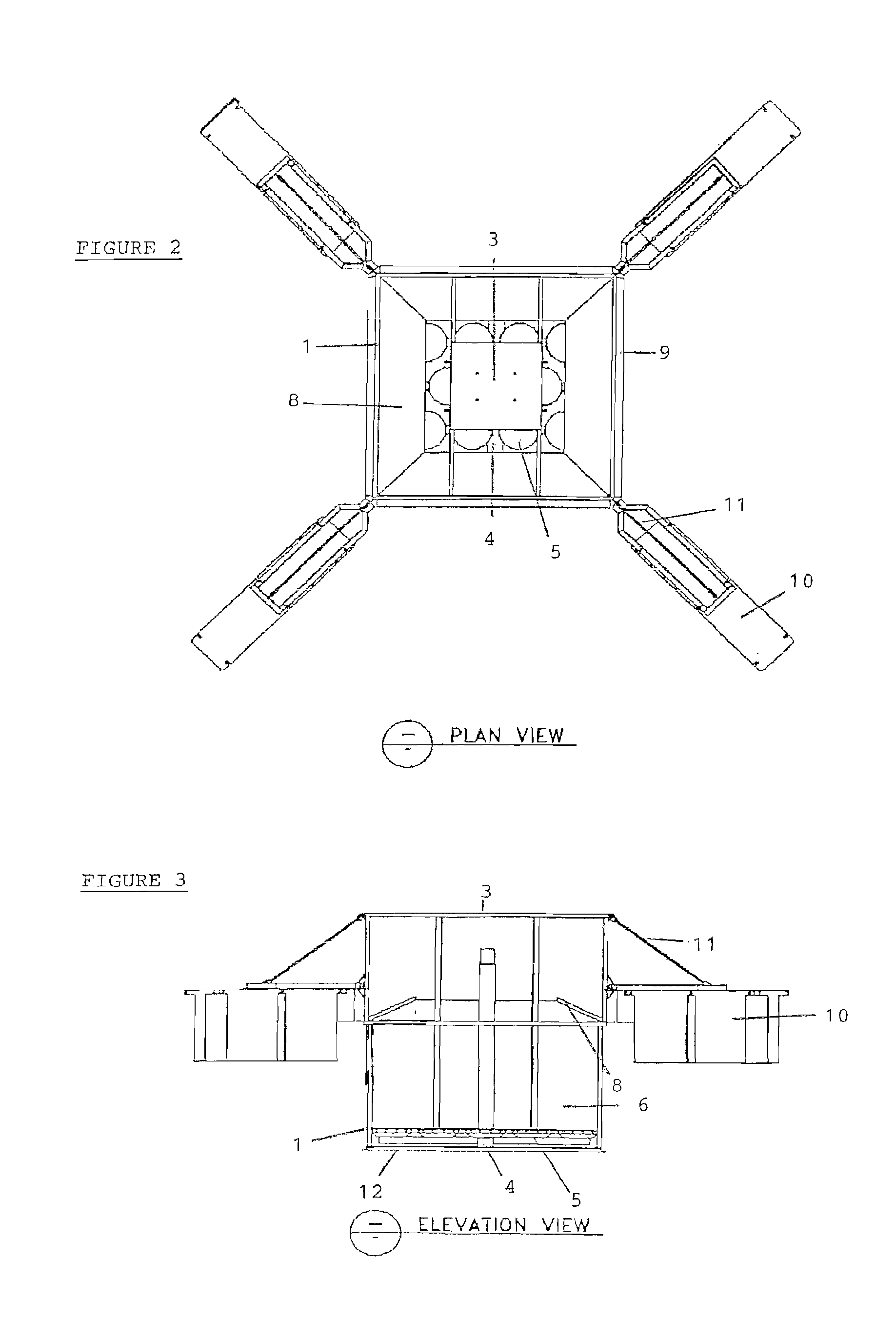Floating diffused air aerator
a technology of diffused air and aerator, which is applied in the field of aerators, can solve the problems of high energy consumption, high maintenance cost, and high energy cost, and achieve the effect of conserving energy inputs
- Summary
- Abstract
- Description
- Claims
- Application Information
AI Technical Summary
Benefits of technology
Problems solved by technology
Method used
Image
Examples
Embodiment Construction
[0038]The primary objective of the present invention is to provide an adaptable aeration device for oxygenating and circulating a liquid such as waste water in ponds, lagoons and similar bodies of liquid using diffused aeration technology.
[0039]It is an additional objective of the floating diffused air aerator to provide a method to sufficiently increase the dissolved oxygen content of waste liquid by introducing oxygen-containing gas into the body of fluid. In a further objective for the aerator, the aerator provides a method to produce a low turbulence, near laminar flow projecting radially outward from the aerator. Simply put, the present invention seeks to efficiently get bubbles into a body of liquid and then get them out in order to induce optimum flow. In another objective, the aerator seeks to provide a method to take advantage of the natural re-aeration processes which occur due to the increased circulation. In a further objective, the aerator seeks to provide a method to a...
PUM
| Property | Measurement | Unit |
|---|---|---|
| diameter | aaaaa | aaaaa |
| thickness | aaaaa | aaaaa |
| angle | aaaaa | aaaaa |
Abstract
Description
Claims
Application Information
 Login to View More
Login to View More - R&D
- Intellectual Property
- Life Sciences
- Materials
- Tech Scout
- Unparalleled Data Quality
- Higher Quality Content
- 60% Fewer Hallucinations
Browse by: Latest US Patents, China's latest patents, Technical Efficacy Thesaurus, Application Domain, Technology Topic, Popular Technical Reports.
© 2025 PatSnap. All rights reserved.Legal|Privacy policy|Modern Slavery Act Transparency Statement|Sitemap|About US| Contact US: help@patsnap.com



